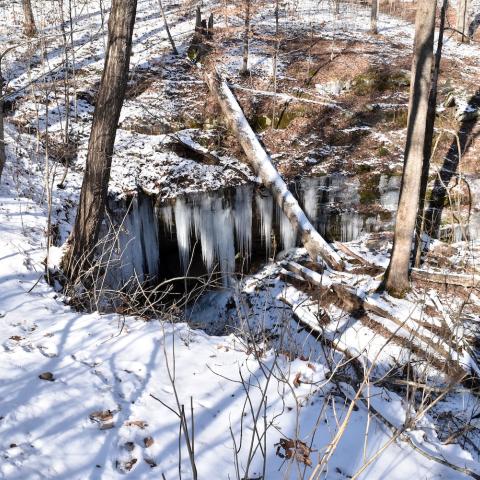
Ginseng roots poached from Mammoth Cave National Park/NPS
There are some natural resources in the National Park System that prove too tempting to some. At Mammoth Cave National Park, two individuals recently were cited for digging up more than 100 ginseng roots from inside the park in violation of federal law.
While it is a violation of federal law to remove any plant from inside the park, ginseng is further protected from harvesting by a 1975 international treaty known as the Convention on International Trade in Endangered Species of Wild Fauna and Flora.
Ginseng is a native plant that grows in the eastern United States and Canada. It originally was harvested by many different Native American tribes. Today, dried ginseng roots are used in medicines, teas, and other health products, and is especially popular in Asian markets. The plant has a slow reproduction process, and it takes many years for the ginseng plant to reach full maturity. Overharvesting and the collecting of ginseng roots before they are fully mature slows the overall production rate of the plants and can decimate populations within the wild.

Ginseng roots with phosphorescent dye/NPS
To combat ginseng poaching, park botanists have come up with a surreptitious way of tracking roots dug up in Mammoth Cave National Park.
"Park botanists have been able to take illegally harvested ginseng roots, such as those that were seized by park staff in the most recent incident, and replant them with some degree of success,” said Tim Pinion, the park's chief of science and resource management. “Before replanting, a special phosphorescent dye is sprayed on the roots which allows law enforcement officers to identify plants that have been illegally harvested from within Mammoth Cave National Park. This technology allows us to better track the roots if someone tries to sell them to a ginseng dealer outside of the park.”
Once placed on the ginseng root, the phosphorescent dye remains visible for the entire lifespan of the plant. The park has even had success with placing the dye directly onto plants that have never been harvested through poaching activities.
“Being able to proactively mark our ginseng plants is a great step in making sure our plant populations are protected and able to thrive,” continued Pinion. “Our science and resource management staff work closely with our law enforcement officers to identify and implement all options in preventing the poaching of the park’s valuable resources. We are all very happy that the latest two poachers were caught and we were able to return the stolen roots back to the forest.”
Park officials ask that anyone witnessing suspicious activity in the park that could be related to ginseng harvesting or the removal of any park resources please contact park law enforcement at 270-758-2115.


 Support Essential Coverage of Essential Places
Support Essential Coverage of Essential Places






